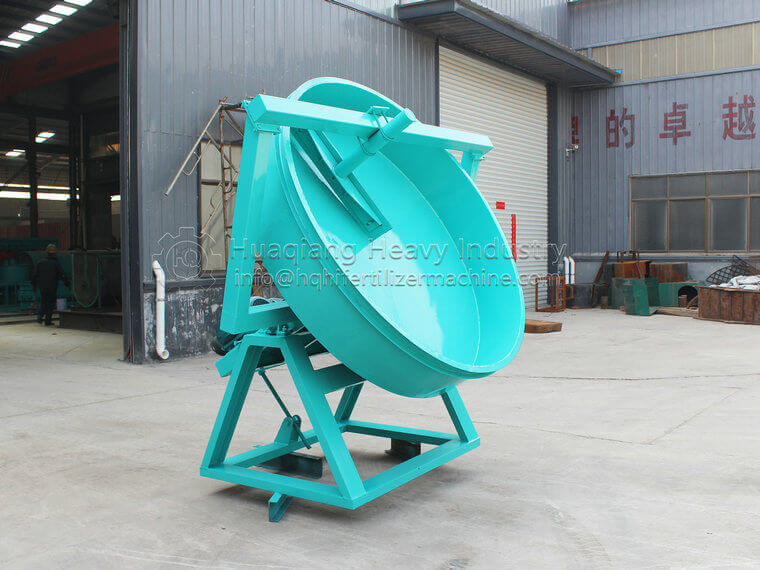Organic fertilizer granulator is a key equipment for converting organic fertilizer raw materials into granular products, and different types of granulators have their own unique working principles.
The disc granulator is based on the motion of a rotating disc to achieve granulation. The disc rotates at a certain speed under the drive of the motor, and the powdered raw material uniformly falls onto the disc from the feeding port. Under the action of centrifugal force and frictional force, the raw material forms a specific motion trajectory on the disc. As the disk rotates, the raw material moves upward along the inner wall of the disk for a distance, and then falls back to the bottom due to gravity, thus circulating. During the process of raw material movement, the nozzle sprays adhesive onto it. The adhesive causes small raw material particles to adhere to each other. As the disk continues to rotate, these small particles roll and collide, continuously adsorbing surrounding raw materials and gradually forming larger particles. By adjusting parameters such as the rotation speed, inclination angle, and adhesive spraying amount of the disc, the size, shape, and roundness of the particles can be controlled. The faster the rotation speed, the shorter the residence time of particles on the disc, and the particles are relatively smaller; The larger the inclination angle, the faster the material slides on the disc, and the particles will also be smaller.

The working principle of the drum granulator depends on the rotation and internal structure of the drum. The drum is driven to rotate by a transmission device and is equipped with a copying board inside. After the raw materials and binders enter the drum together, the plate continuously lifts the raw materials, causing them to form a parabolic motion inside the drum. During the process of raw material movement, the binder binds the particles together. As the drum rotates, the particles gradually grow and form through continuous rolling and collision. The speed and length of the drum, as well as the shape and quantity of the cutting board, can all affect the granulation effect. The appropriate rotational speed is necessary to ensure that the raw materials have enough time to roll and bond. The length of the drum affects the residence time of the raw materials in it, while the design of the plate determines the lifting height and distribution of the raw materials.
Squeezing granulator uses extrusion force to produce particles. The raw materials first enter the feeding port and are then pushed by components such as screws or plungers, passing through a mold with a specific aperture. Under strong extrusion pressure, the raw materials are extruded through the mold holes to form columnar strips. Next, the cutter cuts the columnar strip of material to the set length, obtaining fertilizer particles one by one. This granulation method does not require additional binders and can effectively retain fertilizer nutrients. By adjusting the squeezing force and cutting frequency of the cutter, the size and strength of the particles can be controlled. High squeezing force results in denser particles; High cutting frequency and shorter particle length.
Understanding the equipment principles of organic fertilizer granulators can help producers choose suitable granulators based on their actual needs, improving the quality and efficiency of organic fertilizer production.